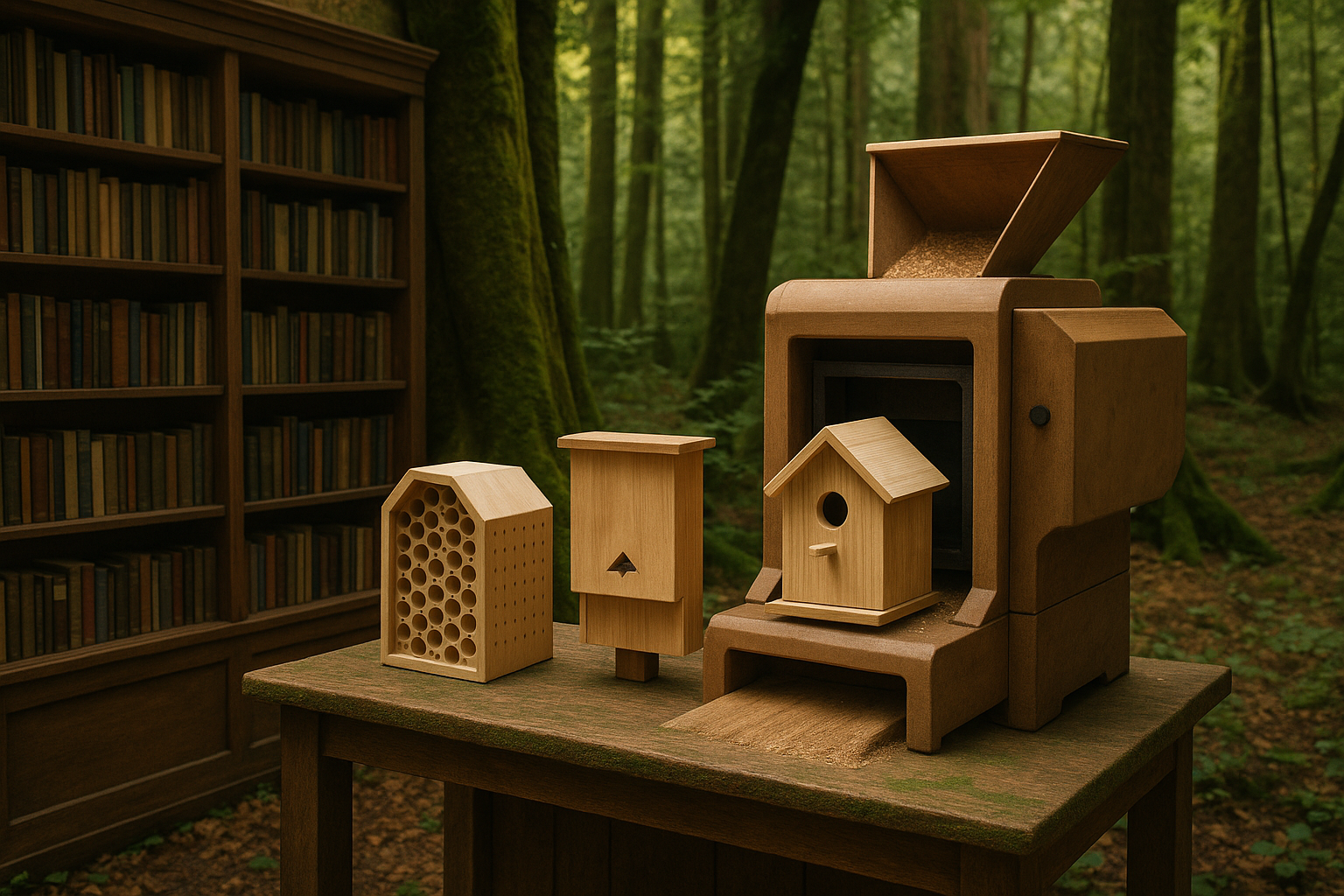
- Published on
- Authors

- Name
- Plant Health
🌟 Introduction: Additive Habitat Solutions for Pollinators and Pest‑Eaters
As natural nesting sites dwindle and mosquito‑borne risks rise, 3D printing unlocks a powerful tool: bespoke homes for solitary bees and insectivorous bats. These modular, scalable structures empower gardeners, farmers, and citizen scientists to restore keystone species, amplify pollination, and achieve organic pest control—one print job at a time.
🐝 Precision‑Engineered Bee Houses
Custom Nesting Cavities
- Optimal boreholes: Tailor tube diameters (4–10 mm) for mason and leafcutter bees, minimizing predators and parasites.
- Modular design: “Honeycomb” blocks snap together—scale up in orchards or rearrange for seasonal sun exposure.
Sustainable Materials
- Biodegradable PLA blends: Bamboo‑ or hemp‑infused PLA degrades over multiple seasons, preventing long‑term microplastic buildup.
- Antimicrobial additives: Non‑toxic silver nanoparticles or chitosan coatings inhibit fungal growth and protect brood.
Pollination Impact
Deploying even a handful of these nests can:
- Raise backyard fruit yields by up to 40%.
- Extend bloom‑time pollination via staggered nest orientations.
- Enable data‑driven research: QR‑coded panels link to mobile apps for logging species, emergence rates, and occupancy.
🦇 Thermal‑Optimized Bat Houses
Nighttime Mosquito Control
A single little brown bat can devour 600–1,000 mosquitoes per hour. Strategic placement of 3D‑printed roosts near wetlands or patios offers continuous, pesticide‑free mosquito suppression.
Adaptive Design Features
- Thermal zoning: Variable wall thickness and venting channels retain heat in cool climates or promote airflow in tropics.
- Easy mounting: Snap‑in dovetail brackets allow relocation for migration or predator avoidance.
- Sensor integration: Hollow chambers accommodate wireless temperature/humidity trackers to monitor colony health in real time.
Agricultural Benefits
Beyond backyard comfort, insectivorous bats help control crop pests—reducing reliance on chemical insecticides and supporting integrated pest management.
⚖️ Environmental & Community Impacts
| Impact Area | Bee Houses | Bat Houses |
|---|---|---|
| Pollination | Boosts fruit, seed, and wildflower health | — |
| Pest Control | Supports parasitoid wasps; fewer hemipterans | Cuts local mosquito populations up to 50% |
| Chemical Reduction | Lowers neonicotinoid use | Reduces mosquito‑targeted pesticide spraying |
| Biodiversity | Attracts >20 solitary bee species | Hosts multiple insectivorous bat species |
| Citizen Science | QR codes for data logging | Interactive guides dispel bat myths |
🛠️ From STL to Sanctuary: Implementation Guide
Select filament
- Bees: PLA‑hemp or bamboo blends.
- Bats: UV‑resistant ASA or durable PETG.
Customize & print
- Grab open‑source STLs from platforms like MyMiniFactory.
- Adjust hole size, wall thickness, or mounting points in your slicer.
- Print at ≥0.2 mm layer height for smooth interiors.
Site installation
- Mount bee houses 3–5 ft off the ground on east‑facing walls.
- Place bat houses 10–15 ft high, in clusters near water sources.
Annual maintenance & monitoring
- Clean nesting tubes in early spring.
- Use apps (e.g., iNaturalist, BeeWatch) to record occupancy, emergence, and species.
Engage your community
- Host “Print & Plant” or “Bat Watch” workshops at schools and libraries.
- Share data back to local conservation networks.
🌱 Conclusion: Print, Place, Prosper
3D‑printed bee and bat houses transform additive manufacturing into an ecological lifeline—customized habitats that boost pollination, curb mosquitoes, and galvanize community stewardship. By merging technology with conservation, every print becomes an act of environmental restoration, one voxel‑by‑voxel.
